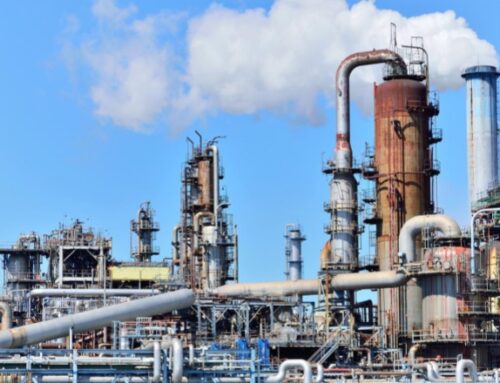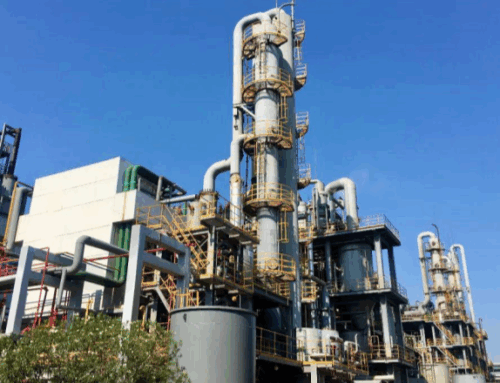In today’s society, plastic waste has become a serious environmental problem, posing a threat to ecosystems and human health. In order to reduce the adverse impact of waste plastics on the environment and maximize the recovery of resources, the circular economy strategy has emerged, and this process involves a variety of chemical reactions and catalytic mechanisms, in which compounds such as ethanol and acetate are the agents that promote their reactions.

1. Biodiesel and recycled plastic derived fuels
Rising global temperatures and the scarcity of fossil fuels make the search for alternatives urgent. In the field of alternatives, biodiesel and recycled plastic-derived fuels are both viable options. Biodiesel is a renewable energy similar to traditional diesel, which has several advantages over fossil fuel alternatives.
Due to its higher oxygen content, lower exhaust emissions from biodiesel, enhanced lubrication performance and non-toxic composition, in engines using a ternary mixture of diesel, vegetable oil and n-butanol, several brake output parameters decrease, including thermal efficiency, torque and average effective pressure, while fuel consumption increases.
Using biodiesel extracted from soybean oil in the engine reduced particulate matter, carbon monoxide and hydrocarbon emissions, but nitrous oxide emissions increased, and the researchers also found that mixing waste biodiesel with diesel, as well as adding different kinds of higher alcohols, increased carbon monoxide emissions and reduced nitric oxide emissions.
Some experimental results show that under different load conditions and fixed speed, the use of waste oil methyl ester mixed with higher alcohols can reduce the brake thermal efficiency, while reducing carbon monoxide and nitrogen oxide emissions, compared with methyl ester, ethyl ester shows better lubrication performance.
Biodiesel has the potential to be environmentally friendly and sustainable as an alternative to fossil fuels, however, research results for different mixtures have varied and further research and experiments are needed to determine the optimal combination and conditions of use.
Waste plastic fuel contains 55% of the aromatic compounds, research shows that the use of pure waste plastic fuel to start the engine, will produce more soot, some people suggest that waste plastic fuel and heavy oil mixed use, waste plastic diesel and biodiesel, can be used as CI engine fuel without modification.
2. Preparation process of converting waste plastics into diesel fuel
A. Catalytic cracking method
Waste plastic pretreatment is the first step in the preparation, waste plastics need to be pretreatment, in order to remove possible pollutants, foreign bodies and moisture, these impurities and moisture will adversely affect the subsequent catalytic cracking process, must be fully removed.
The success of catalytic cracking is closely related to the choice of catalysts, different types of waste plastics and the required products may require different types of catalysts, commonly used catalysts including alumina, aluminate silicate, zirconia, etc., the choice of catalysts should be precisely matched according to the composition of waste plastics and the nature of the required product.
After pretreatment, the waste plastic enters the reactor with the selected catalyst, and under the appropriate temperature and pressure, the waste plastic molecules begin to crack into gas and liquid products, and the reaction rate is increased in the presence of the catalyst, and the decomposition reaction is promoted.
In catalytic cracking, the main goal is to extract the liquid portion, which contains the precursors of the diesel fuel, which need to go through a process of separation and extraction to obtain high-quality, pure diesel fuel.
The diesel precursors produced by catalytic cracking usually require hydrogenation, a step designed to remove unsaturated compounds and improve the stability and quality of the diesel fuel. Hydrogenation can reduce the unsaturation of the fuel and make it more suitable for use as a vehicle fuel.

B. Pyrolysis method
Similar to catalytic cracking, waste plastics need to be pre-treated before pyrolysis, the main purpose of this step is to remove possible pollutants, foreign bodies and moisture, clean waste plastics help improve the efficiency of the pyrolysis reaction and product quality.
The pre-treated waste plastics are fed into high-temperature pyrolysis reactors, where they are subjected to extremely high temperatures, typically between 400°C and 800°C. At high temperatures, waste plastic molecules begin to break down into gas and liquid products, a process that is non-catalytic and completely dependent on temperature and the type of waste plastic.
The pyrolysis process produces a large amount of gas, which needs to be treated to separate and recover useful components, and the gas products undergo a cooling and solidification process to separate out the diesel fuel precursors within them.
The diesel precursors produced by pyrolysis usually also require hydrogenation, a step aimed at removing unsaturated compounds and improving the stability and quality of the diesel fuel.

C. Economic viability
The initial investment cost is the starting point for a project to convert waste plastic into diesel fuel, including the acquisition and installation of equipment and infrastructure such as the construction of reactors, storage facilities, catalysts and treatment equipment, while also taking into account the impact of project size, location and technology selection on the initial investment.
Waste plastic is the main raw material for the preparation of diesel fuel, and its acquisition costs include the procurement, collection, sorting and transportation of waste plastics, and the cost is also affected by the type, quality and reliability of supply of waste plastics.
Operating costs include equipment maintenance, energy consumption, catalyst replacement, labor costs, and waste disposal costs, which will directly affect the economic viability of the project.
The economic viability of the project is also affected by the volume and quality of diesel fuel produced, which can increase sales revenue but also require higher production costs and more processing steps.
Article from M&J International Trading Co., Ltd





